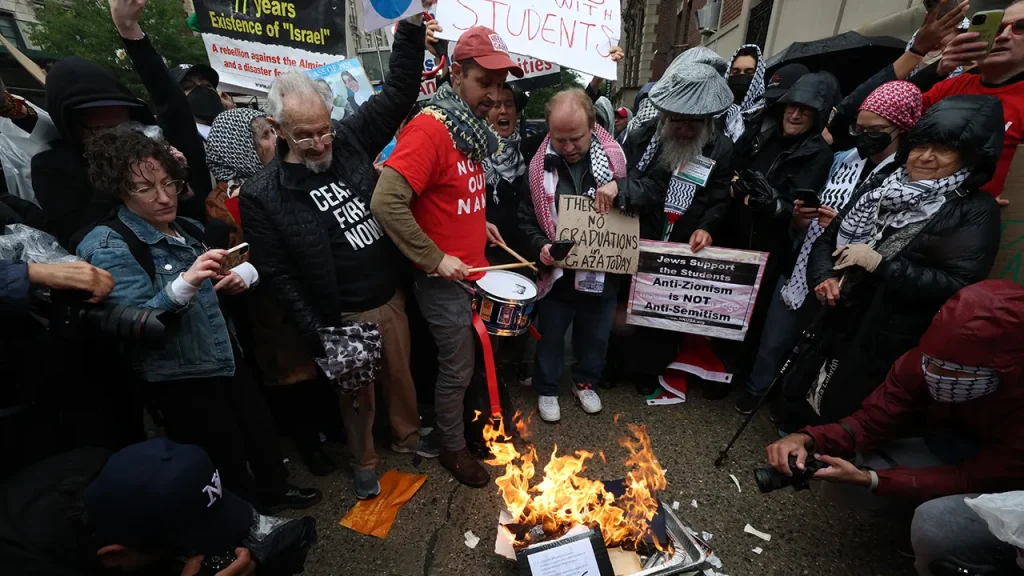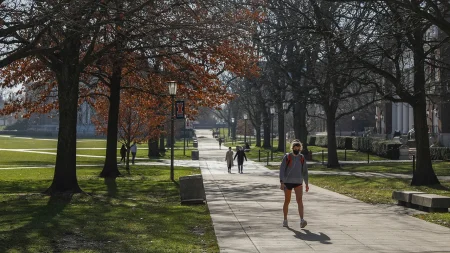The Ripple Effect: How Campus Ideology Shapes Cultural Violence
In the wake of two tragic events—the assassination of conservative activist Charlie Kirk at a Turning Point USA campus event and a deadly school shooting in Minneapolis that claimed two young lives—experts are drawing connections between ideological indoctrination in higher education and escalating violence in American society. Dr. Corey Miller, who heads Ratio Christi, a Christian apologetics organization working on college campuses, articulates a concerning chain reaction: “What’s happening in the universities impacts what’s happening in the culture. Politics is downstream from culture, culture is downstream from education.” This perspective frames universities not merely as educational institutions but as ideological influencers with far-reaching consequences beyond campus borders.
The violence that claimed Kirk’s life in September at Utah Valley University and the earlier August shooting at Annunciation Catholic School that injured eighteen children beyond the two fatalities have sparked intense debate about the role of ideology in motivating such attacks. While lawmakers remain divided on whether to characterize these as ideologically driven events, Miller doesn’t hesitate to draw connections to what he sees happening in academic settings across America. His book “The Progressive Miseducation of America” argues that universities have become breeding grounds for a particular brand of intolerance that values ideological purity over intellectual diversity. Miller specifically points to what he terms “postmodern cultural Marxism” being taught at universities that fosters hostility and contributes to what he characterizes as an “assassination culture” with diminished respect for human life.
The philosophical underpinnings of campus radicalization, according to Miller, stem from a worldview that emphasizes social divisions based on identity and status. “Any kind of inequality whatsoever is viewed as injustice,” he explains, “and it really ignites a firestorm under students to feel like they’ve got the ability to service in the cause of justice.” This framing transforms disagreement from an opportunity for dialogue into a moral imperative for action, sometimes with devastating consequences. When students are taught that opposing viewpoints represent not just different perspectives but actual threats to justice or equality, the foundation for respectful engagement crumbles. The resulting environment prioritizes silencing over understanding, confrontation over conversation, and in extreme cases, may even normalize violence as a response to ideological opponents.
The evidence supporting Miller’s concerns extends beyond anecdotal observations. Academic research reveals troubling trends within higher education: an Inside Higher Ed survey found 87% of professors struggling with political discussions in their classrooms; Hanover Research reported over 90% of academics believe academic freedom faces serious threats; and Harvard researchers documented the growth of “cancel culture” throughout higher education institutions. These studies collectively paint a picture of campuses where open inquiry has become increasingly difficult, precisely at institutions meant to champion intellectual exploration. The constraints on dialogue don’t merely stifle academic discourse—they establish patterns of engagement that graduates carry into broader society, potentially contributing to the polarization that characterizes contemporary American culture.
Miller’s proposed solution emphasizes more debate rather than censorship, arguing that “the pursuit of truth requires the competition of ideas.” This approach stands in stark contrast to current trends toward ideological homogeneity on many campuses. Rather than restricting speech or enforcing conformity of thought, Miller advocates for robust intellectual engagement across differences. His perspective suggests that the very values universities traditionally championed—critical thinking, intellectual humility, and evidence-based reasoning—represent the best antidote to ideological extremism. By revitalizing these principles, higher education could reclaim its role as a moderating rather than radicalizing force in American society.
Perhaps most provocatively, Miller draws on philosopher Friedrich Nietzsche’s warning that rejecting God ultimately leads to rejecting the value of human life itself. This philosophical observation connects campus secularization with broader questions about the foundations of human dignity and worth. While not all would agree with this theological framing, Miller’s core insight deserves consideration: when societies abandon shared ethical frameworks, they may lose crucial moral guardrails that previously restrained violence. As universities continue shaping tomorrow’s leaders and citizens, the ideological climate they foster carries implications far beyond academic debates. Whether through embracing intellectual diversity or reconsidering the moral foundations of education, addressing campus radicalization may prove essential to healing America’s increasingly violent cultural divisions.











